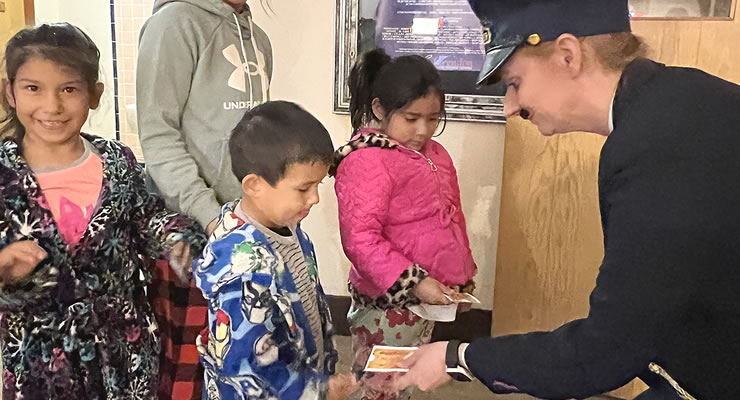With all that is going on in our nation, it is understandable if you have not been paying attention to what is going on in Iran.
However, it is something worth our attention. Suffice to say that back in September, a 22-year-old women named Mahsa Amini died in custody of the morality police for improperly wearing her hijab or head scarf. Her death has led to protests across Iran and a brutal crack-down from the government that has led to at least 300 deaths.

Historically speaking, this is not the first time women have protested the wearing of the hijab. Ironically, one of the most famous protests happened in Egypt in the 1920s. That protest was successful. Yet, one hundred years later, women are being forced again to make the same protests and this time with even greater risks to their lives.
Since Amini’s death, other women have been arrested. Most notably, Elnaz Rekabi, an elite Iranian competitive climber, was arrested after she returned from a climbing competition in Seoul where she did not wear her hijab as required of Iranian women competing abroad. After not being seen for about two weeks, she emerged only to report that it was an accident that she did not wear her hijab, stating it got tangled during her climb, so she took it off. Then there are women like Oscar-winning actress Taraheh Alidoosti, who posted a picture of herself unveiled to show support for the movement. What all these women are doing is brave, considering the cruelty of the regime. They are gaining more support for their cause, and even more are standing on the shoulders of giants who have come before them.
Next year will be the 100-year anniversary of arguably the most famous feminist event in the Middle East. Huda Sharawi was born in Egypt in 1879 to a prominent family. Though she was married at age 13 against her will, her husband, Ali Sharawi , was a nationalist who helped lead the fight against England for independence, a cause that was important to Huda as well. When Ali, who was several years her senior, died, Huda turned her attention to women’s equality. The early years of the twentieth century brought a great deal of change for women. Egypt, wanting to fit into the West, was attempting to modernize and so was opening the door for women’s rights. Egypt was suddenly open to women’s education and allowed them to not only attend schools at all levels but also form intellectual societies which published dozens of new journals dedicated to the advancement of women. Two of the most important groups were the Intellectual Association of Egyptian Women and the Egyptian Feminist Union, both founded by Sharawi.
In the beginning Sharawi’s principal fight was against England. Her husband was a founding member of the Waft Party, which was fighting for independence. Wanting to get involved in the fight and being inspired by international women, Sharawi organized the “March of Veiled Women” through the streets of Cairo, one of the largest anti-colonization marches in Egypt. She then organized the Wafdist Women’s Central Committee, which she served as president. In 1922, England folded to pressure and granted Egypt its independence, even though not full control. The Waft Party then took power of the government. Although women were instrumental in the success of the Waft Party, the women found there was no room for them at the seat of power. Discouraged by the lack of freedom for women that came from liberation, Sharawi organized the Egyptian Feminist Union in 1923 and turned her efforts towards women’s suffrage.
In 1923 Sharawi’s husband died, granting her a certain amount of freedom. That year she attended a women’s conference in Rome, and on her return, she decided on an act of defiance that became symbolic for Islamic women everywhere. When she and her companions disembarked from the train, they stood on the station platform and removed their veils. They could not claim to be free anywhere if they were not free at home. She started a movement of women wearing the hijab only if they wanted out of religious devotion, not because of law or custom. Sharawi would go on to bring about many reforms in Egypt for women. In fact, from the 1930s to the 1960s, it became unfashionable to wear a hijab in public in many Middle Eastern nations. Fashion for both men and women became much closer to American styles than what we tend to associate with the Middle East. It was not until the 1970s that hijabs were seen in public again, after Islamic movements began to sweep through the Middle East. leading to calls to return to Islam and reject western culture. Of course, the 1979 Islamic Revolution in Iran changed everything in that nation, as government-sanctioned modesty became law and hijabs were required.
Women like Sharawi, did not face the same penalties as women do in Iran today for removing their veils. They faced family shame and cultural pressure whereas these modern women face possible death. Yet women like Sharawi were still incredibly brave and faced enormous odds. It was their fight for women’s rights that created a precedent and a good example for women today. It is a shame to see the regression in places like Iran after the work of Sharawi, yet the movement in Iran does not seem to be dying down. Inspired by women like Mahsa Amini and led by women motivated by Sharawi’s example, maybe things can change in Iran. Maybe all Iranians can someday be free to make their own choices.
As we move into this holiday season, I hope everyone enjoys their Thanksgiving. I for one am thankful that with all our problems we still live in the greatest nation in the world.
Dr. James Finck is a Professor of History at the University of Science and Arts of Oklahoma and Chair of the Oklahoma Civil War Symposium.





Reader Comments